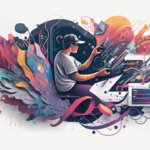The traditional classroom setting has long been the cornerstone of education, but in a rapidly evolving digital age, educators are seeking innovative ways to engage students and promote effective learning. Enter gamification—a dynamic approach that integrates game elements into educational contexts. By tapping into the innate human inclination for play, gamification has the potential to revolutionize education, making learning more engaging, immersive, and ultimately, more effective.
Understanding Gamification
Gamification is the art of applying game design principles and mechanics to non-game environments, such as education. It involves incorporating elements like points, badges, levels, challenges, and rewards into educational activities to create a more game-like experience. The goal is to motivate students, enhance their intrinsic interest in subjects, and promote active participation.
Key Benefits of Gamification in Education
- Increased Engagement: Games are inherently captivating and provide a sense of achievement. By incorporating game elements into learning, students are more likely to stay engaged, as they experience the satisfaction of completing tasks and unlocking rewards.
- Active Participation: Gamification encourages students to take an active role in their learning. They become more proactive in seeking knowledge and participating in activities, as they are motivated by the game-like structure.
- Immediate Feedback: Games offer instant feedback, which is crucial for learning. Gamified learning platforms can provide real-time feedback on quizzes and assignments, allowing students to identify their strengths and areas for improvement immediately.
- Personalized Learning: Gamification can adapt to individual learning styles and paces. Through tracking progress and performance, educators can tailor the learning experience to meet each student’s needs.
- Enhanced Problem-Solving: Many games require critical thinking and problem-solving skills. By integrating challenges and puzzles, gamified education can foster these skills in students.
- Collaboration: Multiplayer games often require teamwork and collaboration. Similarly, gamification can encourage students to work together, fostering a sense of community and shared goals.
Examples of Gamification in Education
- Leaderboards: Students earn points for completing tasks, and their scores are displayed on a leaderboard. This competitive element can motivate students to strive for higher ranks.
- Badges and Rewards: Students can earn badges for accomplishing specific milestones or mastering certain skills. These digital badges act as tangible representations of achievement.
- Quests and Missions: Lessons are structured as quests, where students progress by completing tasks and challenges. This narrative-driven approach creates a sense of purpose and progression.
- Simulations and Virtual Worlds: Gamified platforms can provide immersive simulations and virtual environments, allowing students to experiment and learn in a risk-free space.
Challenges and Considerations
While gamification holds immense potential, there are challenges to consider. Overgamification—where the focus shifts too heavily onto rewards—can lead to superficial engagement rather than deep understanding. Striking the right balance between fun and meaningful learning is essential.
Gamification in education has the power to transform how students perceive learning. By harnessing the intrinsic appeal of games, educators can make subjects more accessible, exciting, and relevant to students’ lives. As technology continues to advance, integrating well-designed game elements into education offers a dynamic way to prepare students for the challenges of the modern world while nurturing their passion for lifelong learning.




